Taqiyah vs Kippah vs Zucchetto, it's not so much a debate as an interesting comparison.…
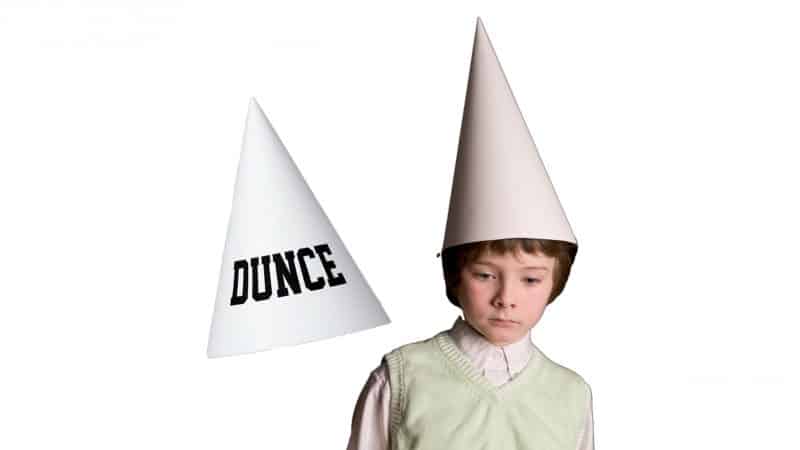
Dunce Cap & its Purpose – 10 Things You Should Know
Dunce caps are often seen as an old-school punishment tool for school kids, but long ago, philosophers used these pointy caps to stimulate thinking.
The invention of a well-respected 13th-century philosopher, dunce caps were once the epitome of intelligence and wisdom.
But history wasn’t fair to dunce caps. Soon the hats became a symbol of foolishness among students, and then they were banned in schools.
So what made the dunce cap go from a mark of intelligence to a fool’s cap?
Keep reading to find out.
1. What is a dunce cap?
A dunce cap is a cone-shaped hat usually associated today with punishments, humility, and disgrace.
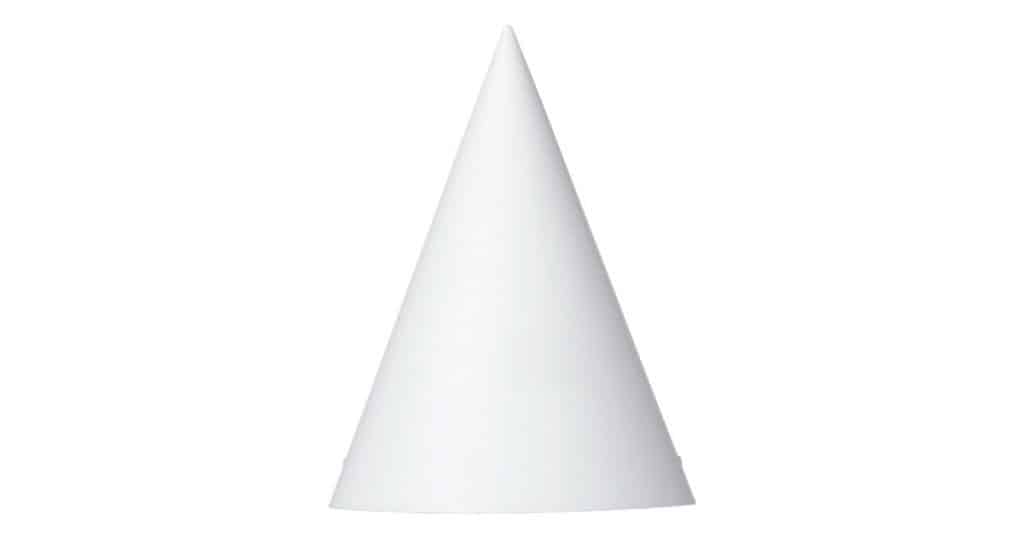
The caps are simple and made with either paper or cardboard rolled into a conical shape. Some dunce caps have a strap that goes under the chin.
Dunce caps were marked with the word Dunce or the letter D and placed on the heads of students facing punishments. These caps were prominent in Europe and the US before they were finally banned in the 20th century.
2. Other names for a dunce cap
A dunce cap is also known as a fool’s cap, referring to how the caps became a well-known symbol of stupidity.
In English, the word Dunce means a person who is slow or with low intelligence. Historians believe that the word Dunce came from the name of the inventor of the hat, whose middle name was Duns.
There are also modified, colorful versions of dunce hats known as a party or birthday hats. The caps are connected to celebrations and happiness.
3. Where did the dunce cap come from?
The dunce cap was created by one of the greatest thinkers of the Middle Ages. The inventor of dunce caps, John Duns Scotus, was born in the village of Duns in Scotland, so it’s easy to think that the first dunce caps came from Scotland, but likely not.
Scotus studied in France and received his highest qualification, a Doctor of Theology from a French university. He continued to teach in a Franciscan school in Cologne and lived in France throughout his life.
The first wearers of dunce caps were Scotus’s pupils. So the first dunce caps probably came from France, where Scotus lived and taught.
The dunce caps soon spread throughout Europe and became popular in the US.
4. A brief history of the dunce cap
John Duns Scotus introduced the first Dunce caps in the 13th century. John Scotus was a Franciscan priest and a philosopher with a high reputation who studied theology, metaphysics, and psychology.
Scotus got his idea for dunce caps from the pointed hats believed to be worn by wizards. He thought knowledge would flow from the pointy end of the dunce cap towards the brain.
His idea behind the dunce cap was that cap would help children to focus. Students of Scotus started wearing duns caps, and some people referred to them as Dunsmen.
It didn’t take long for people to connect dunce hats with intelligence. Other philosophers and teachers also adopted dunce caps to help their pupils to focus during lessons. By the 1500s, scholars turned against Scotus’s dunce caps and other beliefs and shunned most of his once-famous ideas. And soon, dunce caps became a symbol of stupidity rather than intelligence.
In the 19th century, dunce caps were prominent in schools throughout America and Europe. American schools used dunce caps until the 1950s, after which they were banned.
5. What does a dunce cap symbolize?
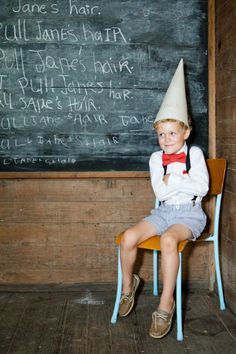
What the dunce cap symbolized changed through the ages. Initially, dunce caps represented knowledge and wisdom, which then changed to low intelligence. At some point in history, dunce caps were associated with sorcery and evil.
Although the purpose of dunce caps was to help children, the caps were stigmatized and inked with stupidity. People wearing the caps started being called dunces, and the hat became the best symbol of dumbness.
Later, schools adopted dunce caps to penalize and humiliate misbehaving pupils, and the caps were associated with low intelligence and misbehavior.
Some people linked dunce caps with evil and sorcery because they looked similar to wizard hats. Historians also believe that John Duns Scotus got the idea for dunce caps from the pointed hast depicted in ancient paintings of wizards. A dunce cap looks very much like a wizard’s hat.
6. What are the purposes of a dunce cap?
Unlike most caps, dunce caps do not intend to protect you from the sun or rain or make you look good.
The purpose of dunce caps changed radically through the ages. This 13th century went from wisdom to punishment and then to celebrations.
For wisdom: More wisdom was the sole purpose of dunce caps. The inventor of dunce caps thought the caps would cause an inflow of knowledge from its pointed tip toward the brain.
For discipline and punishment: After the renaissance period, dunce caps were mocked, and they became a way of penalty for rebellious school children. Discipline and punishment made the dunce caps famous.
Some modern psychologists theorize that certain students focus better when they are made to focus on one thing. They deduce that the dunce caps may hold the attention of a distracted student long enough to help them focus on the lesson. This means that dunce caps actually could be a way of getting the attention of an absent-minded student rather than a way of punishment.
But modern classroom etiquette doesn’t allow dunce caps, so we can’t know if this method will work in a classroom setting.
For celebrations: Nowadays, you’ll only see dunce caps in events like birthday parties. The conical party hats are a more beautiful version of the dunce caps. And they are used for celebration instead of gaining wisdom or punishment.
7. Do smart people wear dunce caps?
Anyone can wear a dunce cap, but our society still associates dunce caps with low intelligence.
The inventor of dunce caps was a brilliant philosopher who encouraged his students to wear conical hats for added wisdom. He thought that the hats could act as a reverse funnel of intelligence. At first, dunce caps were just for intelligent people and students trying hard to study, but not anymore.
Today, dunce caps are only for stupid people. Although schools prohibited the use of dunce caps, adults still use dunce caps some on questions and answer games when contestants get an answer wrong.
Interestingly, you can wear a conical party hat or a birthday cap for a party, and no one will question your intelligence.
8. When did the dunce cap stop being used?
Most schools banned the use of dunce caps in the 20th century.
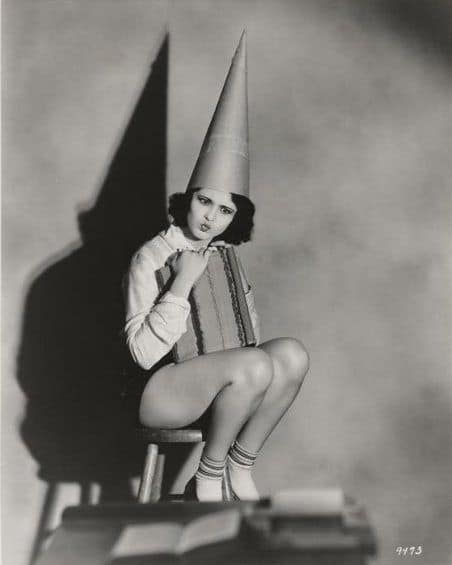
Schooling systems in the 18th and 19th centuries are far different from what we see today. Compared to harsh punishments like caning, the dunce caps were rather kind. Wearing a dunce cap was a sure way to be marked as the class clown in a US school.
However, schooling systems developed and took a turn for the better.
Psychologists announced that dunce caps could induce trauma in kids with learning disabilities, which was not the right way to encourage learning.
But some European schools kept using dunce corners to punish misbehavior. There were no more dunce caps, but students were asked to sit in Dunce’s corner as a punishment. In the 2000s, dunce corners were also banned.
Today, no schools are allowed to use dunce caps, dunce corners, or other humiliating punishment methods. Even using the word Dunce on a student is considered mildly offensive.
9. Types of dunce caps
All the dunce caps are tall, conical, and made with either paper or cardboard.
The original dunce caps: These caps are simple and conical, made with either paper or cardboard. They have the word Dunce or the letter D. You won’t find these in schools anymore, but they are still used in game shows.
Party hats: Party hats, also known as birthday hats, originated from dunce caps. They have the same conical shape as dunce caps but are colorfully decorated. These caps are made of cardboard printed with designs on the outside. Party hats also have an elastic chinstrap to hold them in place. Party hats are very prominent in birthday parties for both kids and adults.
10. Dunce cap materials
Dunce caps are made with paper or cardboard. The hat is just a piece of paper or cardboard rolled into a cone and then glued or stapled together.
Schools in the 19th century even used old newspapers to make dunce caps.
Because the caps are not used for any purpose like protection from weather or even as a fashion statement, paper and board do just fine.
If the hat is modified as a party hat, it may have glitter, sequins, other decorative materials, and an elastic chin strap.
Final Thoughts
Dunce caps once represented academic merit and achievement, and then they represented low intelligence.
Today, the original dunce caps have outlived their use, and you can hardly find anyone wearing them.
Dunce caps have gone through a lot, and we don’t know what the future holds for dunce caps. We can only hope that one day dunce caps will once again be associated with wisdom as they were meant to be.
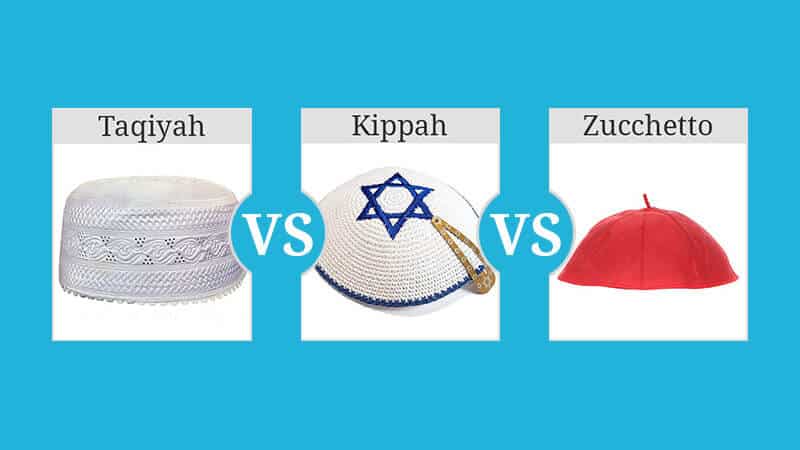
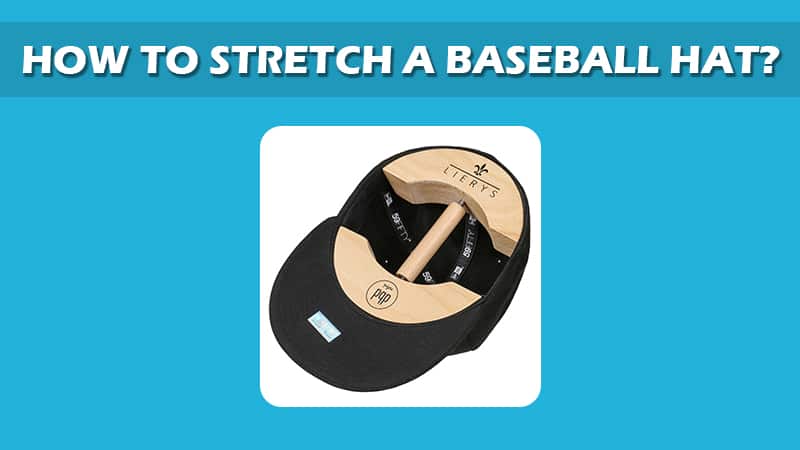

This Post Has 0 Comments